As you know, Maryland is considered Hardiness Zone 6, and some parts are considered Hardiness Zone 7. Therefore, habitats such as temperature, humidity, annual rainfall, or other environmental factors will not be suitable for all. fruit trees.
Therefore, the selection of fruit trees that are suitable for the environmental factors of the Maryland region to have bountiful crops is an extremely important factor. Fruit trees that are not suitable for the climate and environment of the Maryland region will often be damaged by pests or diseases or grow slowly under the negative effects of the weather.
In this article, I have listed the top 10 easiest fruit trees to grow in Maryland. What kind of fruit trees are they? Let’s learn about the characteristics of these fruit trees.
What Are The Easiest Fruit Trees To Grow In Maryland?
Maryland is a land of diverse climates due to the disparity of topography and its proximity to the sea. Therefore, you should choose some fruit trees such as apple tree, pear tree, plum tree, peach tree, fig tree, cherry tree, nectarine tree, apricot tree, mulberry tree, and lemon tree.
1. Apple Tree
Apple trees are considered the easiest fruit tree to grow in Maryland. You will save a lot of care time by not needing to fertilize regularly, watering less, limiting pruning, and being suitable for all types of soil. Apple trees will thrive in Maryland’s cold spring and cool fall months. In particular, the flowers and fruits of apple trees can grow in extreme weather conditions such as snow or frost in late spring.
In particular, the apple tree is also the fruit tree with the highest yield among all fruit trees in Maryland. Apple harvest time can start from late August to November of the year. In addition, if you do not have a garden or limited space, you can also grow this fruit tree in a pot. Given the climate and environment in Maryland, apple trees will be the ideal choice for you to grow in your garden.

Some common problems when growing Apple trees
Of the fruit trees listed in this article, apple trees are most at risk of being attacked by pests. Beetles and aphids are two types of insects that frequently infest the apple tree and cause it to grow slowly and be stunted. In addition, apple trees are also at risk of blight and powdery mildew in the spring or summer. Animals such as deer, rabbits, and squirrels will also infest apples when they are young or during the harvest season.
2. Pear Tree
The pear tree is also a perfect choice for the weather and climate of the Maryland region. They are tolerant of low temperatures and cold in Maryland’s winter months. The sturdiness from the stem to the fruit helps pear trees to withstand the harshness of winter. In addition, pear trees are also resistant to high temperatures or drought. Therefore, you can grow pear trees in any position in the yard or garden without worrying about light problems.
In particular, many gardeners also assess that pear trees have the highest ability to adapt to changes in climate and environment. So, if you are a person with little experience in the field of gardening or lack time to take care of, you should choose pear trees to grow indoors.

Some common problems when growing Pear tree
Like apple trees, pear trees will also be attacked by insects such as aphids, beetles, or flies. If the apple tree can recover quickly, then the pear tree is usually not able to recover or takes a lot of time.
Pear trees can tolerate cold and heat very well but they cannot grow and develop well in wet conditions. If the soil becomes too wet during the winter and spring, the pear tree is likely to rot and die.
3. Plum Tree
A plum tree is a fruit tree that is tolerant of high temperatures and thrives in those conditions. Plum trees will fruit early in summer and mature in winter or warm spring. You also don’t need to worry about the size of these fruit trees because they won’t be more than 8 to 10 feet tall and 6-8 feet wide. Therefore, the plum tree will be a perfect choice to grow in pots and save space.
Like pear trees, plum trees will not do well in wet conditions. Therefore, you should plant this plant in an area with well-drained soil and long exposure to direct sunlight to limit root rot.
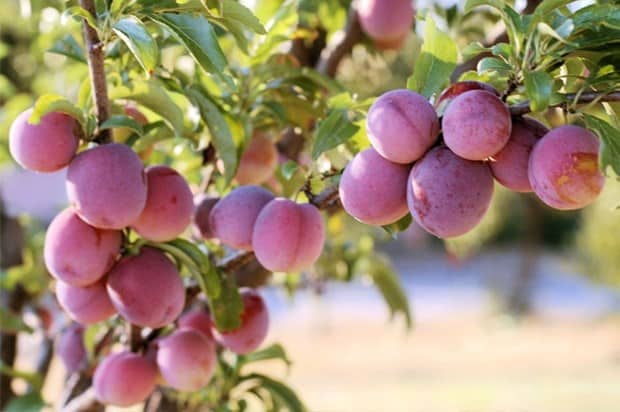
Some common problems when growing Plum trees
Unlike every other fruit tree, the plum tree is very hardy. They are resistant to most insects and pests. So gardeners rank them as the perfect fruit trees to grow in Maryland. However, the destruction of animals will be the issue that you need to worry about the most. Rabbits, deer, and squirrels, after hibernation on an empty stomach, will seek to wreak havoc on your plum tree during any time of spring.
In addition, for the plum tree to grow and develop the fastest, you need to pay attention to the pruning problem. Plum trees will take 5-6 years to flower and fruit. However, if you prune them, the growth rate will be faster and the yield will be better.
4. Peach Tree
If many fruit trees cannot tolerate extreme heat and drought, peach trees are the perfect choice for the harsh areas of Maryland. Peach trees will grow and thrive in high-temperature conditions. The hotter and more humid the temperature, the ideal conditions for peach trees to flower and bear fruit. The peach tree is the fastest-growing tree in the list of fruit trees in this article. They will flower and bear fruit only 1-2 years after you plant.
An outstanding advantage of the peach tree is that it can grow very tall but has a limited width. Peach trees can be 10 to 15 feet tall and only 2 to 3 feet wide. So you can save space around and not encroach on other areas.
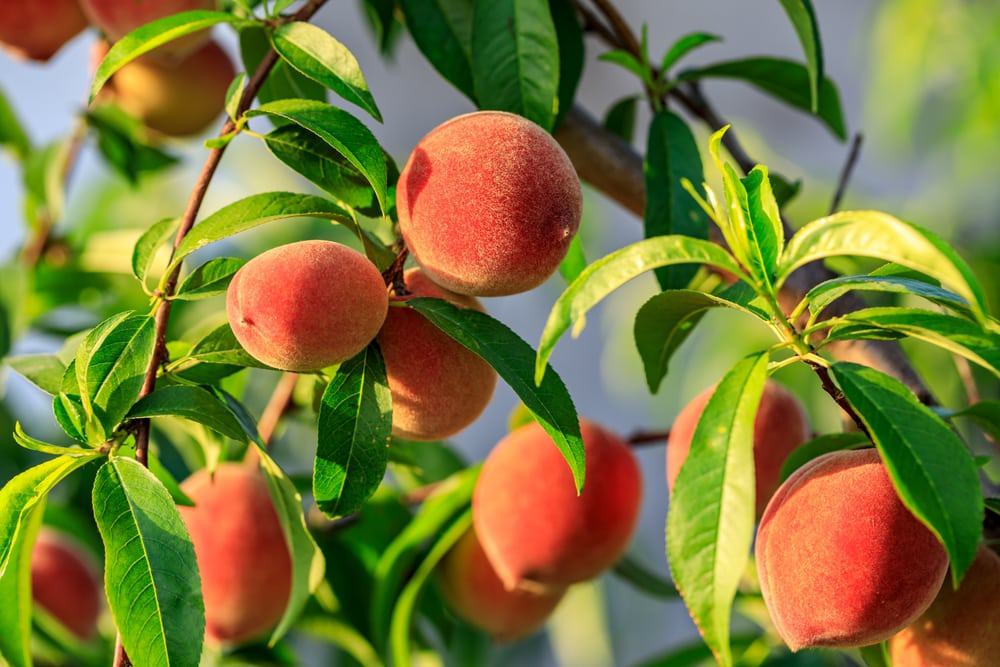
Some common problems when growing Peach trees
Peach trees have a lower tolerance to cold than other trees such as apples, pears, or plums. Although they can still survive the cold winter, if the temperature is below 10 degrees Celsius, they will stop growing or freeze to death.
In addition, peach trees are also susceptible to some diseases such as blight, mildew, or black spot. These diseases are not only common during the wet spring, but also appear during the summer and even fall. So, for best peach tree growth, you should plant them in well-drained soil, an area that gets direct sunlight every day, and avoid being wet for long periods.
5. Fig Tree
The fig tree is a fruit tree for gardeners with little time to care. They are really easy to grow, don’t need frequent fertilizing, only need to be watered once a week, and don’t need pruning to stimulate growth. You can grow fig trees in pots indoors or out in the yard. However, bring them indoors when frost and cold wind come.
In particular, the fig tree is the most resistant fruit tree on this list. Deer and deer don’t like figs, rabbits can’t get them, while squirrels and rats prefer fruit with a better taste.
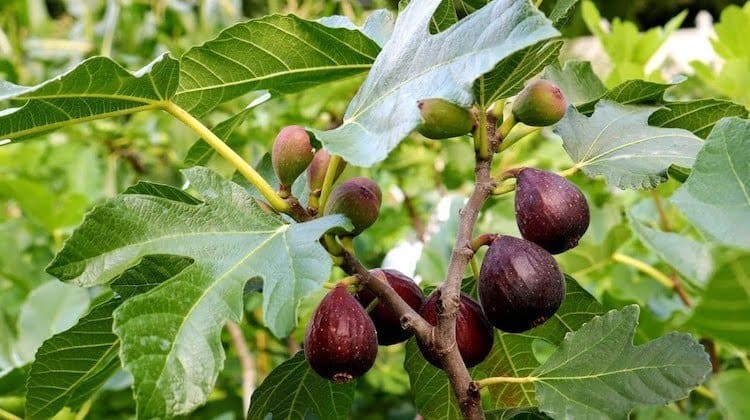
Some common problems when growing the Fig tree
Although some fig trees can survive and thrive during winter in Maryland, most will become stunted and fruitless or may even die if temperatures are too cold and frost occurs during the winter. long time. If you grow a fig tree in a pot, you should pay attention to the moisture in the soil as it will dry out faster in the soil during the hot days in Maryland.
6. Cherry Tree
If you want to grow a fruit tree that can effectively cross-pollinate with other fruit trees, you should plant a cherry tree in your garden. This type of fruit tree will bring great efficiency in the process of cross-pollination between fruit trees.
In particular, the cherry tree is the most productive fruit tree in the list of fruit trees in Maryland in this article. This fruit tree does not grow as tall as the others but it can produce up to 50 pounds of fruit a season.
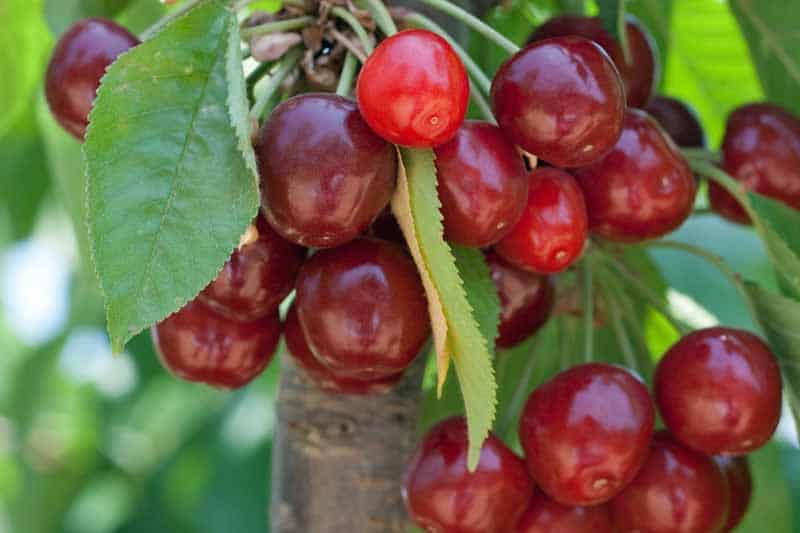
Some common problems when growing Cherry trees
Cherry trees will not be attacked by insects and animals like other fruit trees. However, if you do not protect the fruit with nets, they will seriously damage the crop.
Cherry trees also cannot tolerate wet conditions for long periods of time or extremely cold temperatures. They will have root rot and eventually die. An important tip for growing cherry trees is that you should regularly prune, mulch, spray pesticides and insects, and protect the fruit with a net system.
7. Nectarine Tree
Like peach trees, nectarine trees love hot temperatures because they will produce more delicious and sweet nectarines when it’s hot and sunny. This fruit tree grows at a rapid rate, especially during the first 1 or 2 years. Nectarine trees mainly grow in height and do not grow wide, so they are very suitable for those who do not have a garden and limited space.
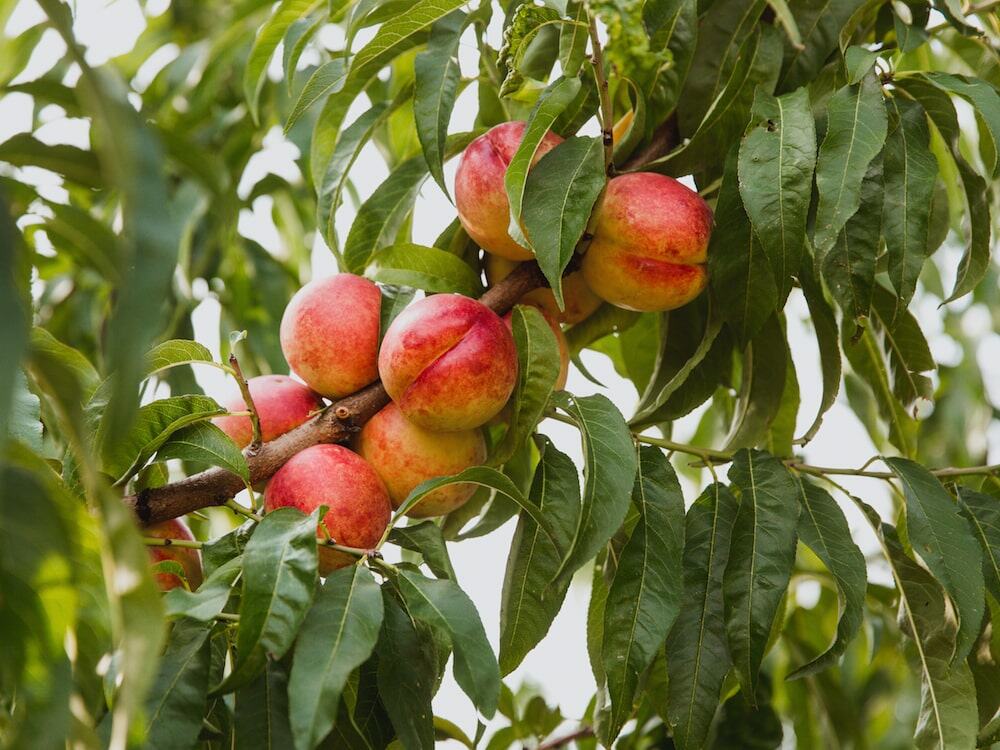
Some common problems when growing Nectarine tree
Nectarine trees cannot tolerate extreme cold, so you need to take measures to protect them when the temperature is too low. If you live in the northern part of Maryland, the nectarine tree will have to endure the extreme temperatures of winter. If the temperature is below 20 degrees F for a long time, you should use a cloth or plastic bag to wrap the plants and keep them warm. Try to protect nectarine trees over the winter and stimulate their growth when spring comes.
Nectarines can be susceptible to disease in early summer. In addition, they are also susceptible to blight, fungus, and rotting in wet conditions. Well-drained soil and sunlight will make nectarines less susceptible to pests and diseases.
8. Apricot Tree
Apricot trees are one of the most moisture- and temperature-tolerant fruit trees in Maryland. In areas with little summertime and low rainfall, apricot trees would be an ideal choice. The apricot tree has a smaller stimulus compared to other fruit trees. So they are great for growing in pots or small spaces.
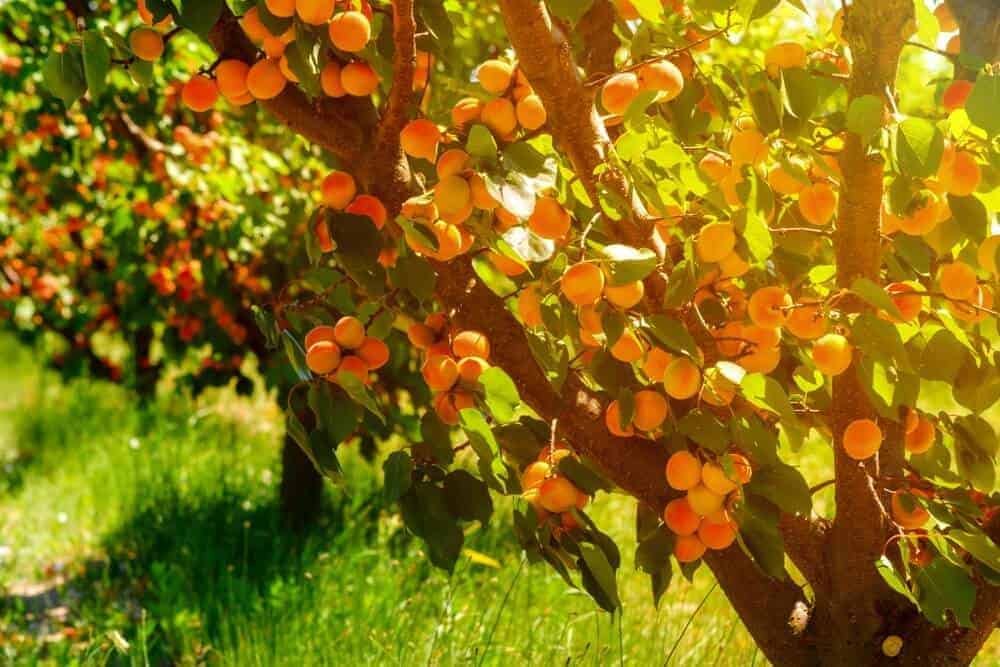
Some common problems when growing Apricot tree
Apricot trees will be severely affected by insects, diseases, sometimes wind-wet conditions, and garden pests. Insects such as aphids, beetles, and worms will attack Apricot trees during their growth and development.
In addition, the Apricot tree also cannot withstand extremely cold temperatures for many days. If you do not protect them from wind and snow, they will very easily die and be unable to recover when the temperature is warm again. You should regularly prune, and spray pesticides and protect them from the negative effects of the weather.
Read more: 8 Fruits That Can Be Grown Indoors
9. Mulberry Tree
Mulberry trees can grow in almost any condition of Maryland. However, this fruit tree is often planted by few people and is not as popular as the above fruits. You can grow mulberry trees with other fruit trees or all over the place because their size is very flexible. They can adapt to any space to grow and develop well such as garden corners, fences, walls, or in pots.
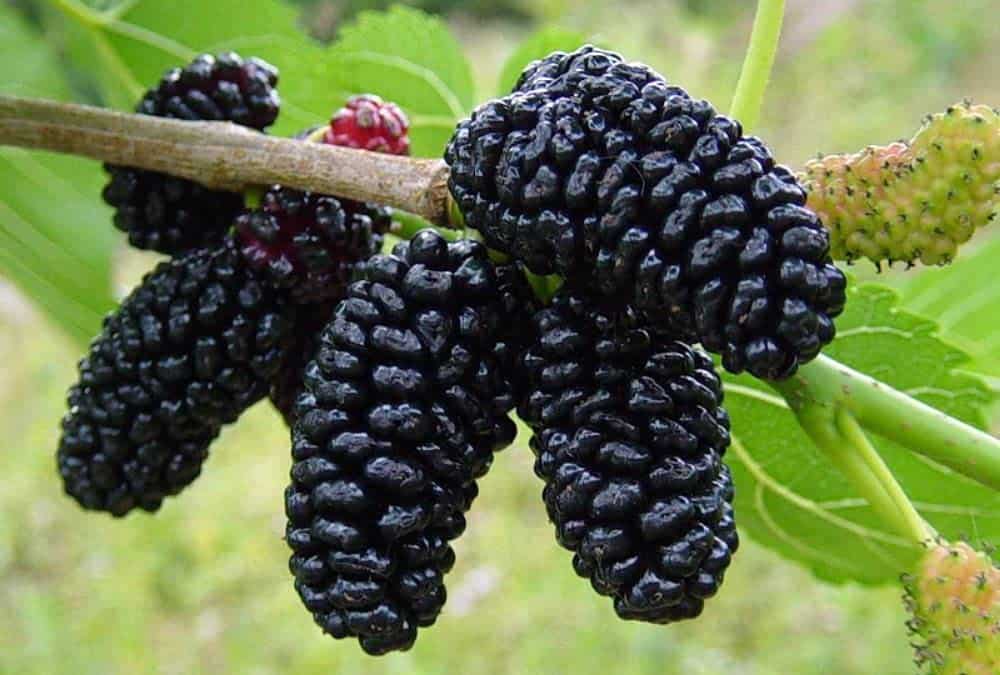
Some common problems when growing Mulberry tree
When growing mulberry trees, you will need to protect them from birds. Although birds will not harm the tree, they will damage the fruit before harvesting. As you know, mulberry trees will produce a lot of fruit on their own, but to have 4 to 5 times as many mulberries, you should plant them next to another mulberry tree to promote cross-pollination.
10. Lemon Tree
In this list of 10 fruit trees, the lemon tree will thrive best in high temperatures. This fruit tree is suitable for growing in warm climates in Maryland. Lemon trees are often grown in pots in Maryland to easily move from indoors to outdoors. They are not only used as an ornamental plants but also give fruit to serve in daily meals.

Some common problems when growing Lemon tree
Lemon trees are the most cold-sensitive fruit trees on this list. If the temperature drops below 50 degrees F, the lemon tree will not grow or bear fruit. If the temperature drops below freezing, the lemon tree will die and cannot recover.
In addition, some insects will also attack lemon trees. You need to clean the leaves regularly and use neem oil to spray and avoid the hiding of insects.
Read more: Lemon Tree Losing Leaves in Summer: What to Do
Conclusion
If you live in the Maryland area, you should choose some fruit trees such as apple tree, pear tree, peach tree, fig tree, nectarine, cherry tree, lemon tree, mulberry tree, apricot tree, and plum tree. These fruit trees are all adaptable to climates and weather conditions in parts of Maryland. However, you also need to protect them from negative external influences such as animals, insects, strong winds, snow, and extreme winter temperatures.